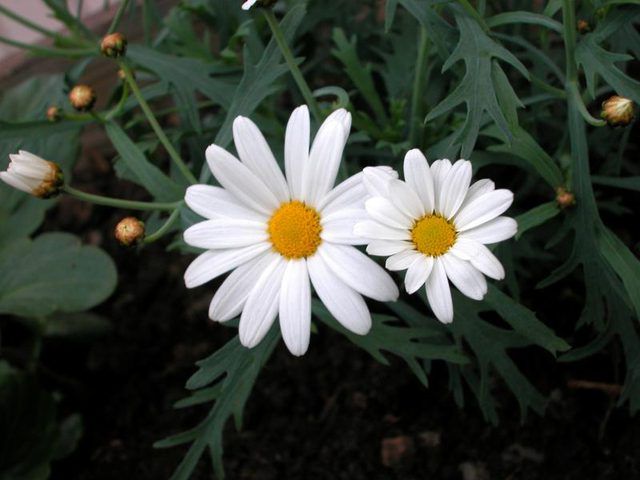Bulbs
Flower Basics
Flower Beds & Specialty Gardens
Flower Garden
Garden Furniture
Garden Gnomes
Garden Seeds
Garden Sheds
Garden Statues
Garden Tools & Supplies
Gardening Basics
Green & Organic
Groundcovers & Vines
Growing Annuals
Growing Basil
Growing Beans
Growing Berries
Growing Blueberries
Growing Cactus
Growing Corn
Growing Cotton
Growing Edibles
Growing Flowers
Growing Garlic
Growing Grapes
Growing Grass
Growing Herbs
Growing Jasmine
Growing Mint
Growing Mushrooms
Orchids
Growing Peanuts
Growing Perennials
Growing Plants
Growing Rosemary
Growing Roses
Growing Strawberries
Growing Sunflowers
Growing Thyme
Growing Tomatoes
Growing Tulips
Growing Vegetables
Herb Basics
Herb Garden
Indoor Growing
Landscaping Basics
Landscaping Patios
Landscaping Plants
Landscaping Shrubs
Landscaping Trees
Landscaping Walks & Pathways
Lawn Basics
Lawn Maintenance
Lawn Mowers
Lawn Ornaments
Lawn Planting
Lawn Tools
Outdoor Growing
Overall Landscape Planning
Pests, Weeds & Problems
Plant Basics
Rock Garden
Rose Garden
Shrubs
Soil
Specialty Gardens
Trees
Vegetable Garden
Yard Maintenance
Pyrethrin Vs. Permethrin
Pyrethrin Vs. Permethrin. More than 150 years ago people of central Eurasia were using dried, crushed, daisy-like flowers from the genus Chrysanthemum to treat body lice. They were onto something. The crushed powder, called pyrethrum, contains components, called pyrethrins, which have an almost immediate paralyzing affect on insects. Pyrethroids...

More than 150 years ago people of central Eurasia were using dried, crushed, daisy-like flowers from the genus Chrysanthemum to treat body lice. They were onto something. The crushed powder, called pyrethrum, contains components, called pyrethrins, which have an almost immediate paralyzing affect on insects. Pyrethroids are, essentially, man-made versions of pyrethrins. Permethrin is one of those man-made copies of the natural insecticide.
Natural Pyrethrin
Two species of chrysanthemum flowers, C. cinerariaefolium and C. cineum, provide the pyrethrins for the commercial production of insecticides. Used in indoor and outdoor bug foggers, head lice treatments and flea sprays, pyrethrins are one of the least toxic treatments for pest insects around the home and garden. They are, however, highly toxic to aquatic life and to beneficial insects, such as bees. Commercial use of pyrethrins is limited since they break down quickly when exposed to light or water. Researchers have developed synthetic pyrethroids to create longer lasting pesticides.
Synthetic Permethrin
A synthetic pyrethroid, known as permethrin, was registered for use on cotton in 1979. Since then, it has become one of the most widely used pyrethroids in the United States, available for agricultural and home garden use against a broad spectrum of insect pests. Unlike the botanically derived pyrethrins, permethrin persist longer in the environment, continuing its insecticidal properties for up to 12 weeks. Like its natural counterpart, permethrin is highly toxic to aquatic creatures and bees.
Insecticide Action
Sodium channels in nerve cell membranes allow charged atoms, ions, to pass through, changing the electrical charge of the cell, which releases neurotransmitters. Neurotransmitters communicate, through electrical messages, with other nerve cells to produce an action, such as moving a leg or flying away. In insects, pyrethrin and permethrin interfere with that communication by allowing the ion channels to stay open longer, ultimately paralyzing the insect. Since it does not degrade as quickly as natural pyrethrin, permethrin also acts as a gut poison to insects that eat permethrin-treated plants.
Toxic Effects
Both the natural and synthetic versions of chrysanthemum based insecticides threaten fish, mollusks, amphibians and non-target insects. Despite this risk, pyrethrins and permethrins are widely used because they break down quickly in the environment and have few toxic effects on mammals and birds. In 2013, the U.S. Environmental Protection Agency instituted labeling initiatives for manufacturers of pyrethrins and permethrin to ensure that professional and residential users apply the products in ways that minimize run-off and contamination to water bodies. Read and follow those instructions when applying and storing these insecticides.